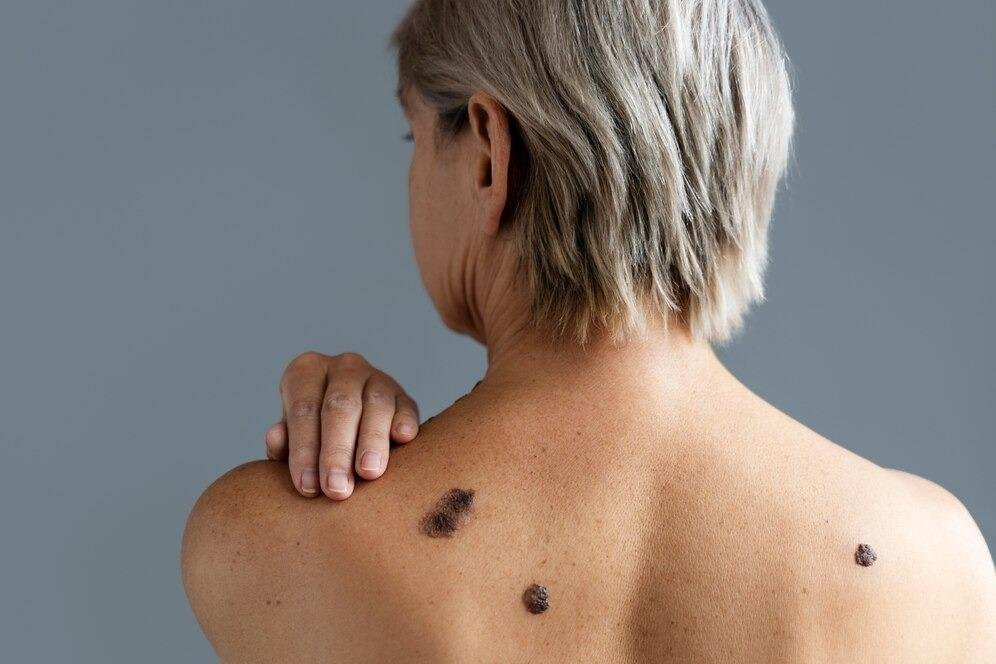Early detection of skin cancer spots can save lives. Skin cancer is one of the most common forms of cancer, but recognising it in its early stages makes treatment easier and more effective. Many people overlook changes in their skin, which could be early cancer symptoms. The following is a detailed article on how to spot these changes and when to seek medical help.
What is Skin Cancer?
Skin cancer occurs when skin cells grow uncontrollably, often due to DNA damage from UV exposure. It is crucial to recognise various skin cancer spots and understand their characteristics to act promptly. Early detection is vital because it offers a higher chance of successful treatment.
Types of Skin Cancer
Different types of skin cancer have distinct characteristics. Knowing these can help you identify cancer symptoms early.
1. Melanoma
Melanoma is the most dangerous form of skin cancer. It often appears as a new mole or changes in an existing one. Look for asymmetry, irregular borders, varied colors, and a diameter larger than 6mm. Rapid changes in size, shape, or color are warning signs.
2. Basal Cell Carcinoma (BCC)
BCC is the most common but less aggressive type. It usually appears as a translucent bump or a sore that doesn’t heal. It’s often found on sun-exposed areas like the face and neck.
3. Squamous Cell Carcinoma (SCC)
SCC often looks like a scaly, red patch or a wart-like growth. It can be more aggressive than BCC and may spread if left untreated.
Key Signs of Skin Cancer
Regular skin checks are essential for spotting skin cancer spots. Examine your skin from head to toe, and don’t ignore hidden areas like the scalp, between the toes, and under the nails. Here are some key signs to watch for:
1. ABCDE Rule
This rule helps identify potential melanoma:
- Asymmetry: One half of the mole doesn’t match the other.
- Border: Edges are irregular, ragged, or blurred.
- Color: Various shades of brown, tan, black, or sometimes red, white, or blue.
- Diameter: Larger than 6mm, but they can be smaller when first detected.
- Evolving: Changes in size, shape, or color over time.
2. Unusual Sores or Growths
Pay attention to sores that don’t heal or growths that change over time. If they bleed, itch, or hurt, it might be an indication of something serious.
Self-Examination Tips
Check your skin regularly for new or changing skin cancer spots. Use a mirror to examine hard-to-see areas and take note of all moles, freckles, and spots. A monthly self-exam can help detect early cancer symptoms.
When to See a Doctor
If you notice any changes that concern you, don’t hesitate to consult a dermatologist. Early consultation can prevent the development of severe skin cancer. Look out for new spots, changes in existing moles, or any skin lesion that doesn’t heal.
Conclusion
Recognising skin cancer spots and identifying early cancer symptoms are crucial steps in protecting your health. Regular self-examinations and being aware of changes in your skin can make a significant difference. If you see any suspicious changes, consult a healthcare professional promptly. Early action is the best defense against skin cancer, so keep an eye on your skin and take any concerns seriously.
Staying vigilant and seeking medical advice when necessary can help detect skin cancer early, ensuring better treatment outcomes and, ultimately, saving lives.



More Stories
Top 10 PCD Pharma Franchise Companies in Bihar
Comfortable Invisalign Treatment in Bangalore at Dr Anne’s C
Comfortable Invisalign Treatment in Bangalore at Dr Anne’s C